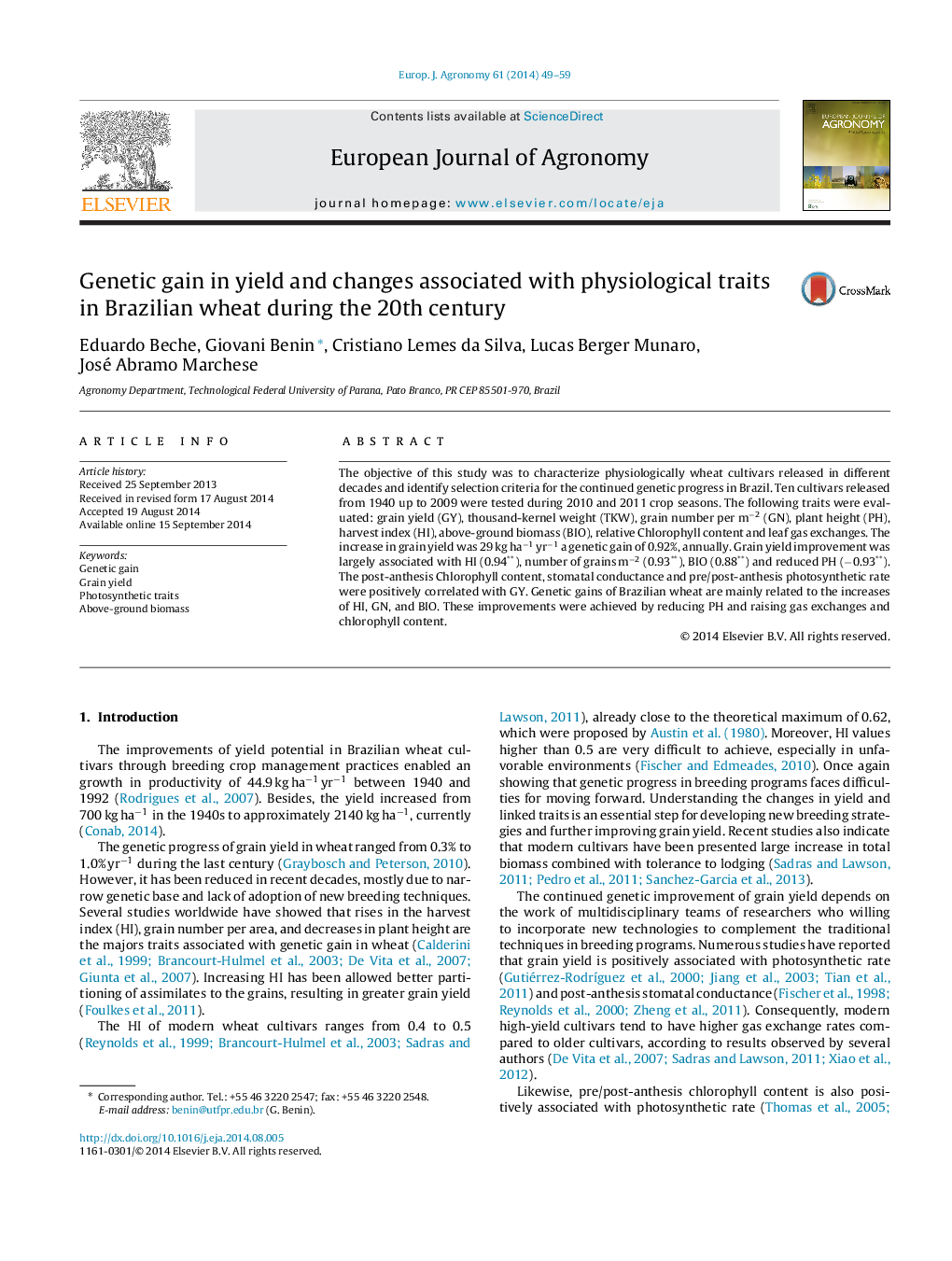| Article ID | Journal | Published Year | Pages | File Type |
|---|---|---|---|---|
| 4508893 | European Journal of Agronomy | 2014 | 11 Pages |
•A set of cultivars released between 1940 and 2009 were used.•Agronomic and physiological traits were evaluated.•Genetic gain was mainly realated to the increased of above-ground biomass and grain number.•Grain yield was close associated with high photosynthetic rate.
The objective of this study was to characterize physiologically wheat cultivars released in different decades and identify selection criteria for the continued genetic progress in Brazil. Ten cultivars released from 1940 up to 2009 were tested during 2010 and 2011 crop seasons. The following traits were evaluated: grain yield (GY), thousand-kernel weight (TKW), grain number per m−2 (GN), plant height (PH), harvest index (HI), above-ground biomass (BIO), relative Chlorophyll content and leaf gas exchanges. The increase in grain yield was 29 kg ha−1 yr−1 a genetic gain of 0.92%, annually. Grain yield improvement was largely associated with HI (0.94**), number of grains m−2 (0.93**), BIO (0.88**) and reduced PH (−0.93**). The post-anthesis Chlorophyll content, stomatal conductance and pre/post-anthesis photosynthetic rate were positively correlated with GY. Genetic gains of Brazilian wheat are mainly related to the increases of HI, GN, and BIO. These improvements were achieved by reducing PH and raising gas exchanges and chlorophyll content.
